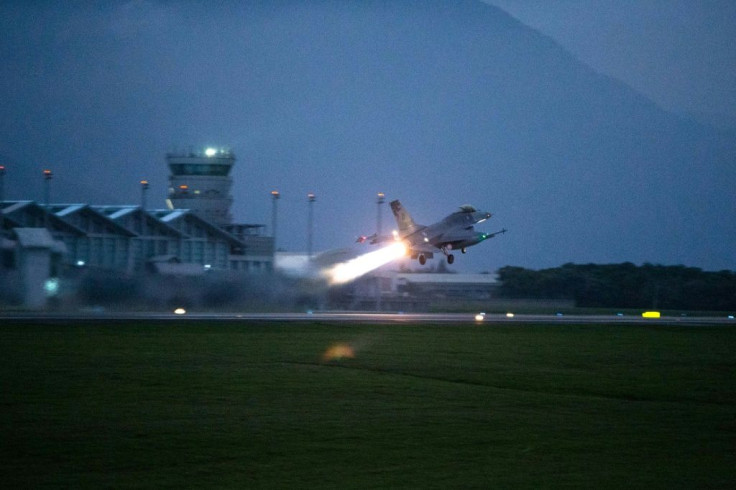Taiwan Strait: Frequent US Surveillance Flights Prompted By Concerns Over PLA War Games, Say Officials

A Chinese think tank, the South China Sea Strategic Situation Probing Initiative (SCSPI) sent a Twitter message Thursday that said, “On the morning of June 25, U.S. P-8A and RC-135 are conducting reconnaissance in the South China Sea, staying focused on the waters east of Bashi Channel. Meanwhile, a C-17A Globemaster III is flying over the South China Sea.”
The tweet was accompanied by an image of the aircraft's supposed movements.
The P8-A Poseidon is designed for anti-submarine warfare. The RC-135 is a reconnaissance aircraft and the C-17A is a transport plane. They are among about a dozen United States warplanes that have been spotted in the region since mid-June, according to SCSPI.
The stated goals of SCSPI are to maintain and promote peace, stability, and prosperity of the South China Sea. Its director is Hu Bo, who is also the director of the Centre for Maritime Strategy Studies at Peking University. Their view is that the U.S. is the biggest threat to the trio of think tank goals.
China’s response to the American flights was to increase its activity in the region with some flights of its own by the People’s Liberation Army (PLA).
Details of China’s flights came from Taiwan’s defense ministry who said PLA Sukhoi-30 and Jian-10 fighter jets, and Yun-8 transport planes had entered the southwestern section of Taiwan’s air defense identification zone 11 times this month. Eight of the flights occurred in the past two weeks, prompting the Taiwanese air force to scramble jets to warn them off.
Taiwan declined to confirm any U.S. Air Force activity in the region despite the SCSPI tweet.
The catalyst for the recent airborne activity stems from a May 12 report by Japan’s Kyodo news agency about the PLA’s plans to stage a large-scale landing exercise off Hainan in August.
The drills were reported to be a preparation for the possible seizure of Pratas Island, a strategic island that sits between Taiwan and Hainan, an island province of China, and the nation’s southernmost point. That report also said that the U.S. had deployed electronic-warfare aircraft to carry out several intelligence-gathering missions in the same area.
Since then, Beijing and Washington have had an exchange of words described as “hawkish” by the South China Morning Post:
- In an opinion piece carried last week by a Singaporean based newspaper, The Straits Times, the U.S. Secretary of Defense, Mark Esper, called for closer security ties between the U.S. and its allies in Southeast Asia “amid challenges posed by Covid-19 and the Chinese Communist Party”
- The same newspaper published an article Monday reporting that Beijing’s ambassador to Taiwan, Hong Xiaoyong, had accused Esper of “fueling tensions by labeling China a threat and calling for joint deterrence”
- On Wednesday, U.S. Pacific Air Forces Commander General Charles Brown echoed Esper’s sentiments in a Department of State Briefing. He said he was concerned by the increase in China’s military activity in the region
Brown mentioned in 2018 when he assumed regional command, the PLA hardly ever flew its H-6 bombers over water. “Now it’s an everyday occurrence,” he said.
He added, “I’m concerned by increasingly opportunistic activity by [China] to coerce its neighbors and press its unlawful maritime claims while the region and the world is focused on addressing the [COVID-19] pandemic.” Hu and SCSPI are sure to have a different view.
© Copyright IBTimes 2025. All rights reserved.





















